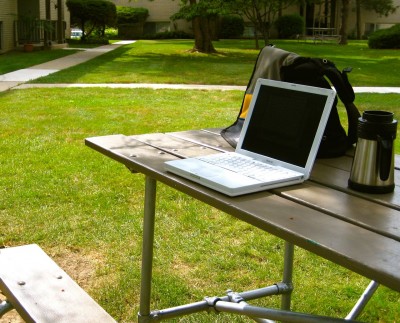I’m one of those annoying people who always responds to any suggestion that we “do something” about gun violence or terrorism by pointing out that we allow 40,000 motor vehicle deaths per year, and that maybe we should do something about that problem first.
I don’t do this for tactical reasons. (I recognize that, as a tactic, this argument is a dead loser.)
I do it because I really, really care about motor vehicle deaths—given my lifestyle, I figure they’re the most likely cause of my own premature death.
I walk a lot, and a lot of my walking is along roadways. I also bicycle a lot, and a lot of my bicycling is along roadways. (I walk and bicycle for transportation, not merely for fitness. If you’re walking or bicycling to get somewhere, you’re going to end up going on the roads that lead from where you are to where you need to go.)
The number of people who die of gunshot wounds in the US is high, but very few of those deaths are random. A majority are suicides. The overwhelming majority of the remainder are criminal-on-criminal homicides.
It’s easy to reduce your risk of being shot to a level so low as to be statistically insignificant, and the steps you need to take are all perfectly sensible things that everyone should do anyway:
- Seek treatment if you’re suffering from depression
- Don’t commit crimes
- Don’t do business with violent criminals
- Don’t hang out with violent criminals
Do those things and your risk of being shot drops to the level of other risks that you largely ignore, like the risk of being struck by lightning or the risk of being gored by a bull.
There is no similar set of things you can do to similarly reduce your risk of being killed or injured by a motor vehicle. (If anyone can provide one, I’d be delighted to hear it.)
Besides the fact that I (apparently perversely) view motor vehicle deaths as the larger problem, I also don’t see any good, simple way to reduce firearm deaths. (Except, you know, the way I just mentioned which is highly effective at reducing them on an individual basis.)
I think a lot of people would be glad to see guns disappear (as has largely happened in Australia) or at least be very strictly limited (like in the UK or in Canada)—but that’s not going to happen. In a democracy such major changes require not just a majority vote but a broad consensus in society.
At a minimum, a lot of people suggest, if we’re going to allow people to own firearms, there should at least be some “reasonable regulation,” like there is with cars. I object to such schemes, on the grounds that there’s no way to enforce them without using police-state tactics.
It is not, I wish to emphasize, just about firearms that I feel this way. I object to any scheme where citizens are required to keep their papers in order, or are required to show their papers when demanded by some official. The immigration debate raises the same issues, and I feel the same way in that case as well.
Such objections may seem like a weird fantasy of an America that never was, but that’s not the case. Until quite recently, it was entirely possible to get along in the United States without any sort of government-issued ID. Even now it’s possible, although it requires giving up things that are tough to get along without. (It’s tough to open a bank account or to get a job without ID.) But that’s a problem to be fixed, not an excuse to go on adding to the list of things that require papers.
I don’t just complain about this stuff. I’m active locally in the community of people advocating for better bicycling and pedestrian infrastructure. I work to improve the laws to make things safer for bicyclists, and I work to educate both bicyclists and drivers on safe riding and driving.
I would encourage you to do so as well. Even if you’re not a bicyclist you know some, and everyone’s a pedestrian.
If you do—if you’re one of the many people who’s making significant and ongoing contributions to bicycling and pedestrian safety—I promise to listen thoughtfully and give serious consideration to anything you’ve got to say about reducing gun violence.


